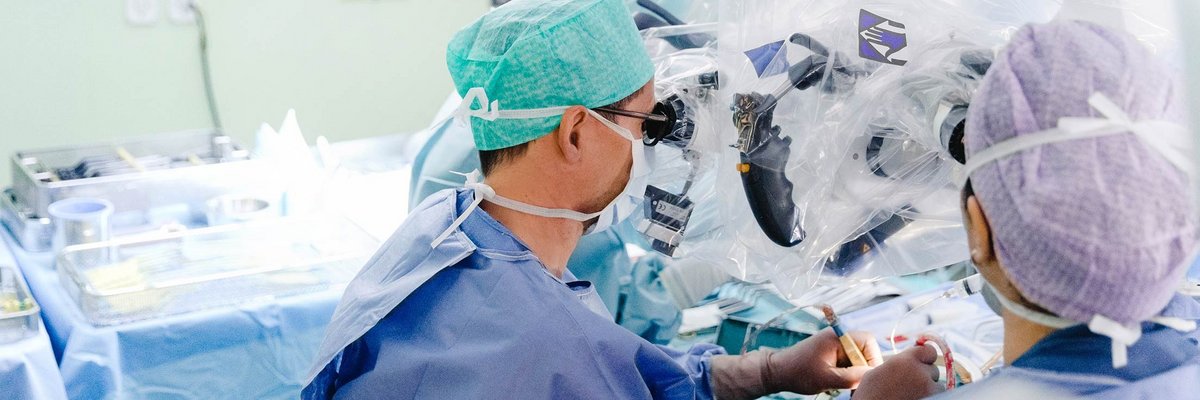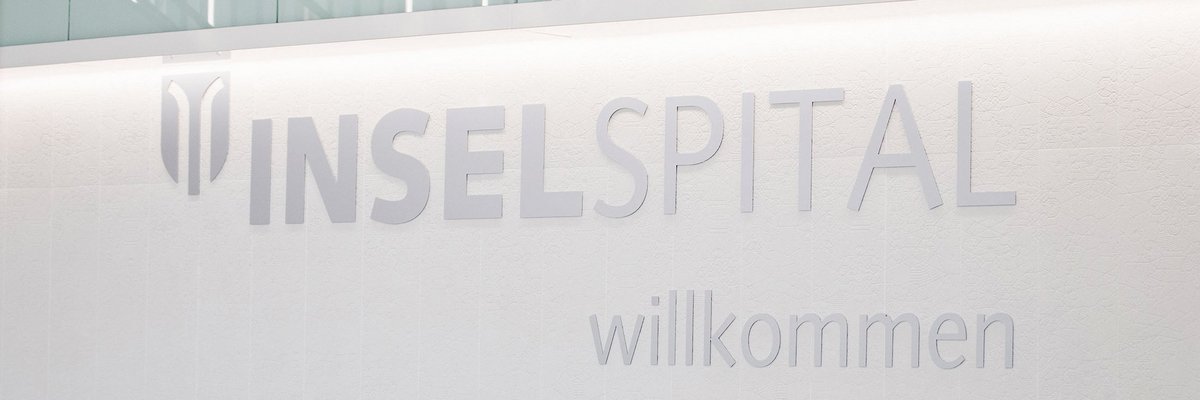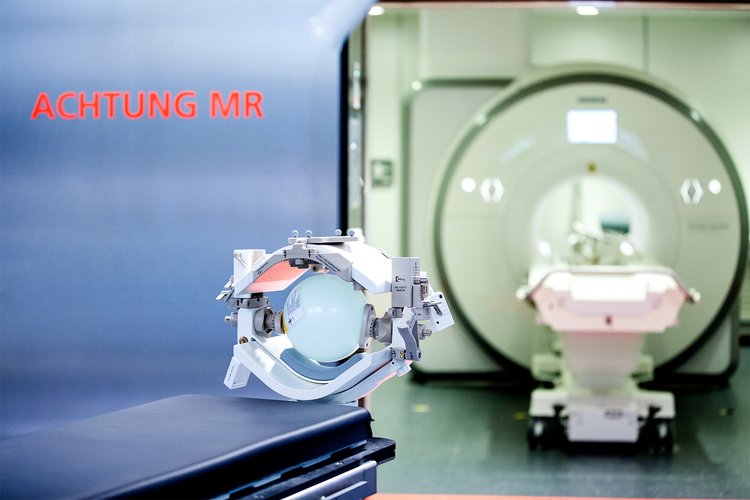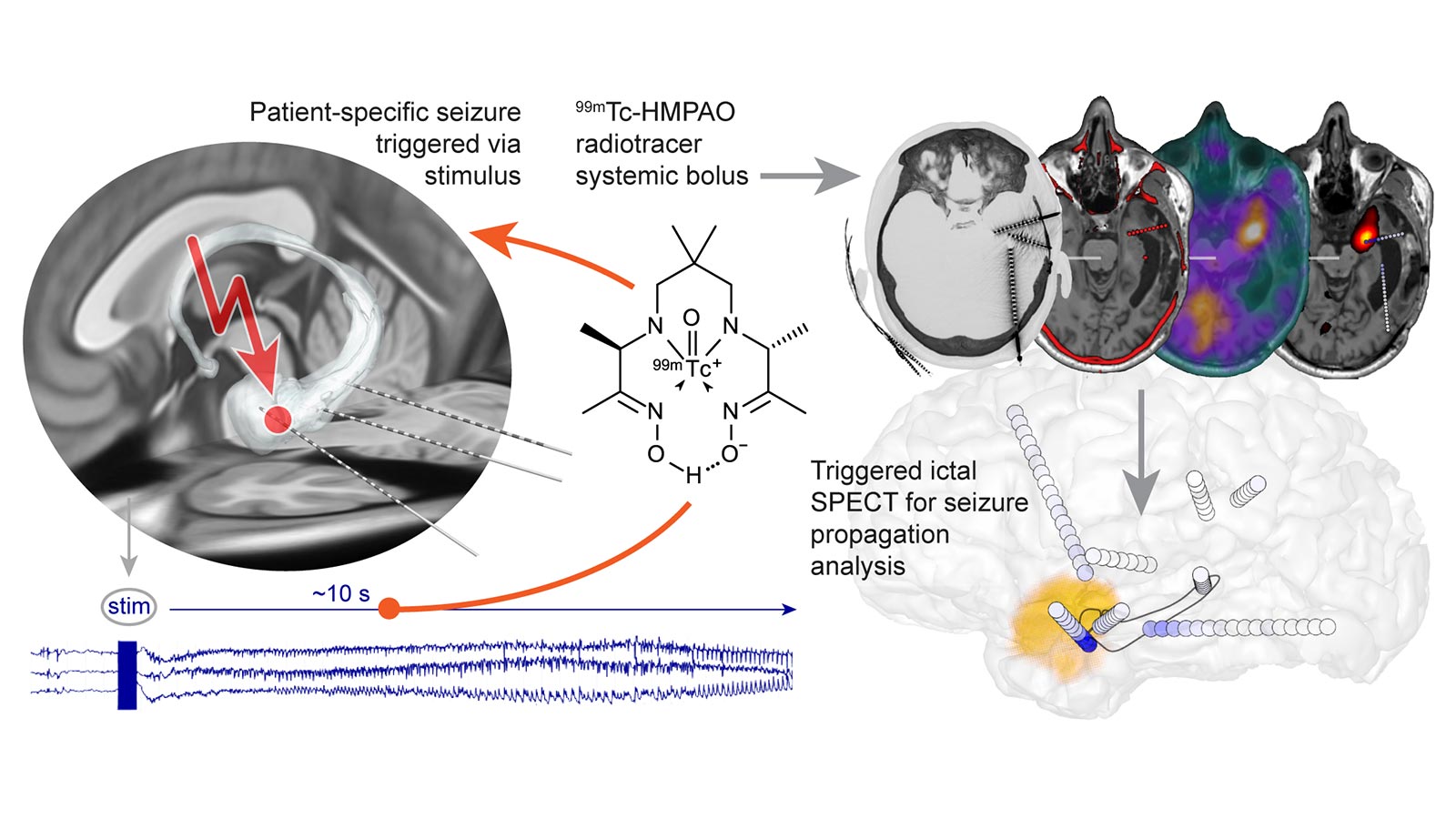Department of Neurosurgery
The Department of Neurosurgery at the Inselspital, Bern University Hospital, is an internationally renowned clinic for the surgical treatment of diseases of the brain and spine. We would like to inform you about our clinic and make it easier for you to contact us. Welcome!
News
Researchers at the Department of Neurosurgery, Department of Neurology, and Department of Nuclear Medicine have discovered a groundbreaking new method for triggering and recording epileptic seizures in a case study. An epileptic seizure can now be tracked and recorded in real time. The data obtained in this way is fundamental for the development of a possible surgical treatment for epilepsy.
Imaging during an epileptic seizure
Die sogenannte ictal SPECT-Methode ist seit den 1990er-Jahren das einzige bildgebende Verfahren, das in der Lage ist, die Ausbreitung eines epileptischen Anfalls im Gehirn bildlich festzuhalten. Sie wird oft während eines Anfalls durchgeführt, um die Region im Gehirn zu lokalisieren, in der die epileptische Aktivität stattfindet. Diese Bilder sind vor allem für die Planung eines chirurgischen Eingriffs bei Epilepsie-Patientinnen und -Patienten, die nicht auf eine medikamentöse Behandlung ansprechen, von entscheidender Bedeutung. Allerdings verzichten die meisten Epilepsiezentren inzwischen aufgrund steigender Kosten und Zeitdrucks im Gesundheitswesen auf diese Technik.
Triggering epileptic seizures in a targeted manner
The newly developed method, which allows epileptic seizures to be triggered in a targeted manner, saves time and resources. Imaging can now be scheduled for a specific time, unlike the previous procedure, which sometimes involved long waits for the images. The groundbreaking research results were published in the March issue of the journal «The Journal of Nuclear Medicine». The lead author of the publication is Sabry Barlatey, MD, from the Department of Neurosurgery at Inselspital, Bern University Hospital.
Related Links
- Publication of study resultsThe publication «Triggered Seizures for Ictal SPECT Imaging: A Case Series and Feasibility Study» appeared in the Journal of Nuclear Medicine (March 2024).
- Doctor profile Sabry Barlatey, MD
- EpilepsyInformation from the Department of Neurosurgery on epilepsy and surgical treatment options
Media tips
Researchers at the Department of Neurosurgery, Department of Neurology, and Department of Nuclear Medicine have discovered a groundbreaking new method for triggering and recording epileptic seizures in a case study. An epileptic seizure can now be tracked and recorded in real time. The data obtained in this way is fundamental for the development of a possible surgical treatment for epilepsy.
Imaging during an epileptic seizure
Die sogenannte ictal SPECT-Methode ist seit den 1990er-Jahren das einzige bildgebende Verfahren, das in der Lage ist, die Ausbreitung eines epileptischen Anfalls im Gehirn bildlich festzuhalten. Sie wird oft während eines Anfalls durchgeführt, um die Region im Gehirn zu lokalisieren, in der die epileptische Aktivität stattfindet. Diese Bilder sind vor allem für die Planung eines chirurgischen Eingriffs bei Epilepsie-Patientinnen und -Patienten, die nicht auf eine medikamentöse Behandlung ansprechen, von entscheidender Bedeutung. Allerdings verzichten die meisten Epilepsiezentren inzwischen aufgrund steigender Kosten und Zeitdrucks im Gesundheitswesen auf diese Technik.
Triggering epileptic seizures in a targeted manner
The newly developed method, which allows epileptic seizures to be triggered in a targeted manner, saves time and resources. Imaging can now be scheduled for a specific time, unlike the previous procedure, which sometimes involved long waits for the images. The groundbreaking research results were published in the March issue of the journal «The Journal of Nuclear Medicine». The lead author of the publication is Sabry Barlatey, MD, from the Department of Neurosurgery at Inselspital, Bern University Hospital.
Related Links
- Publication of study resultsThe publication «Triggered Seizures for Ictal SPECT Imaging: A Case Series and Feasibility Study» appeared in the Journal of Nuclear Medicine (March 2024).
- Doctor profile Sabry Barlatey, MD
- EpilepsyInformation from the Department of Neurosurgery on epilepsy and surgical treatment options










